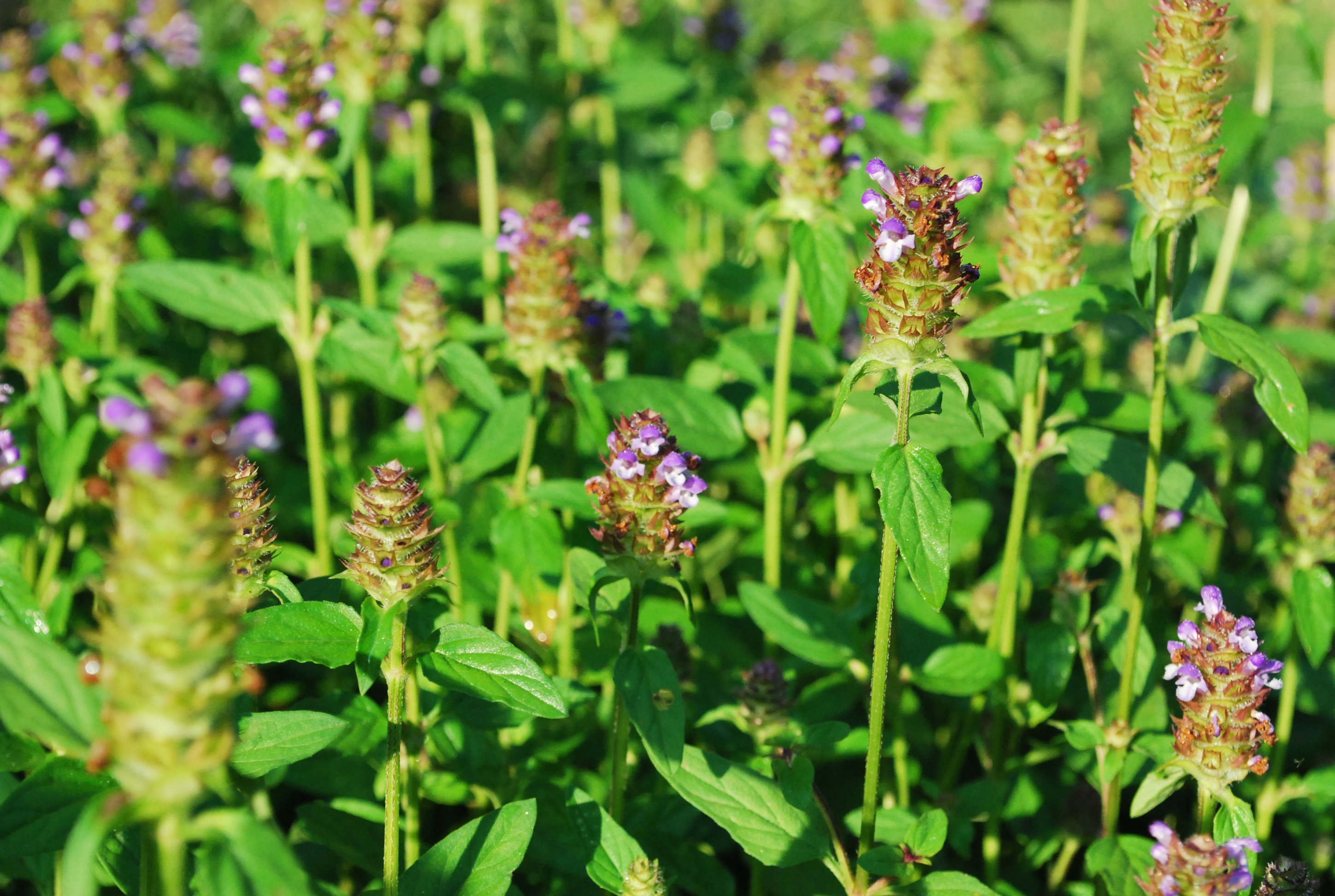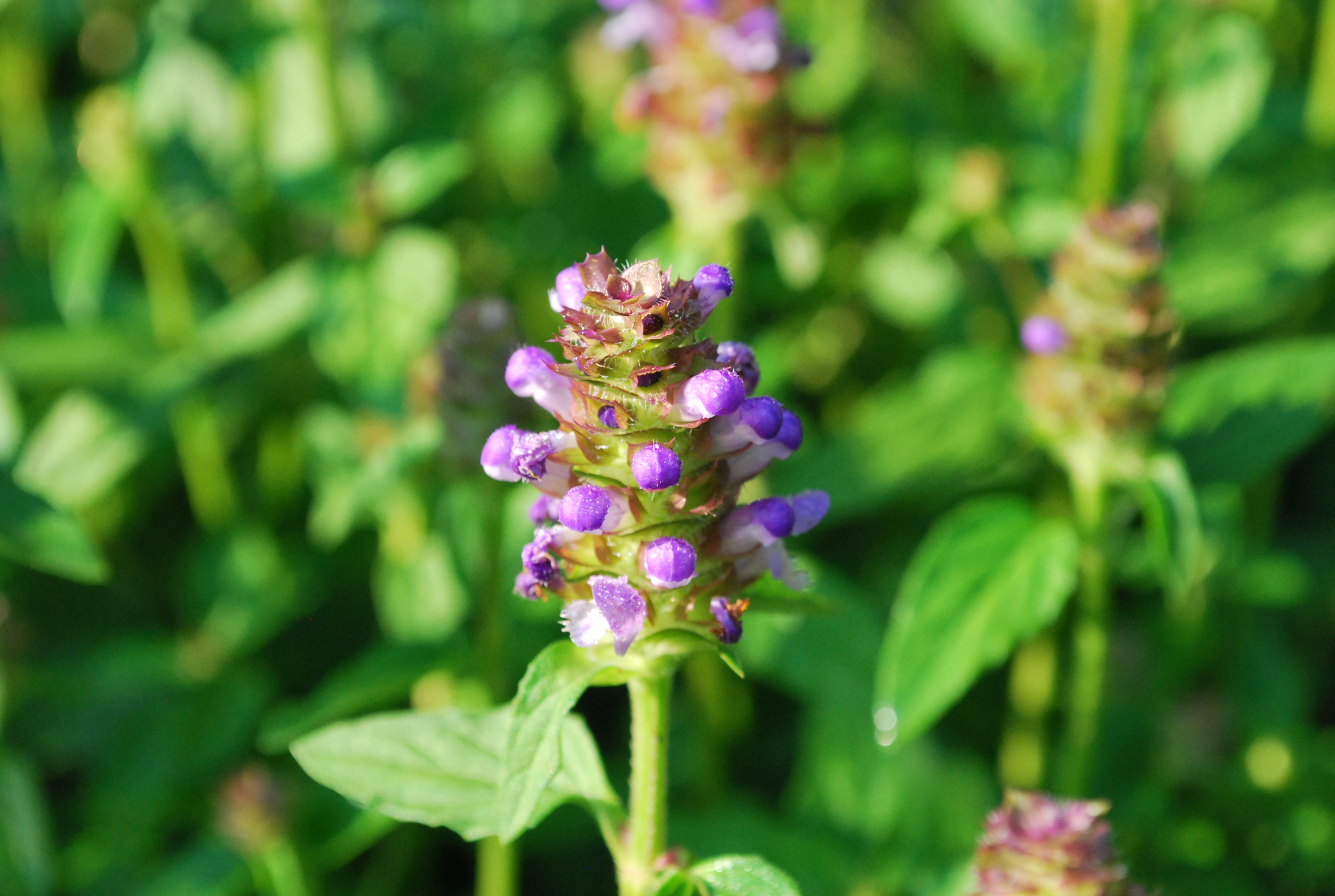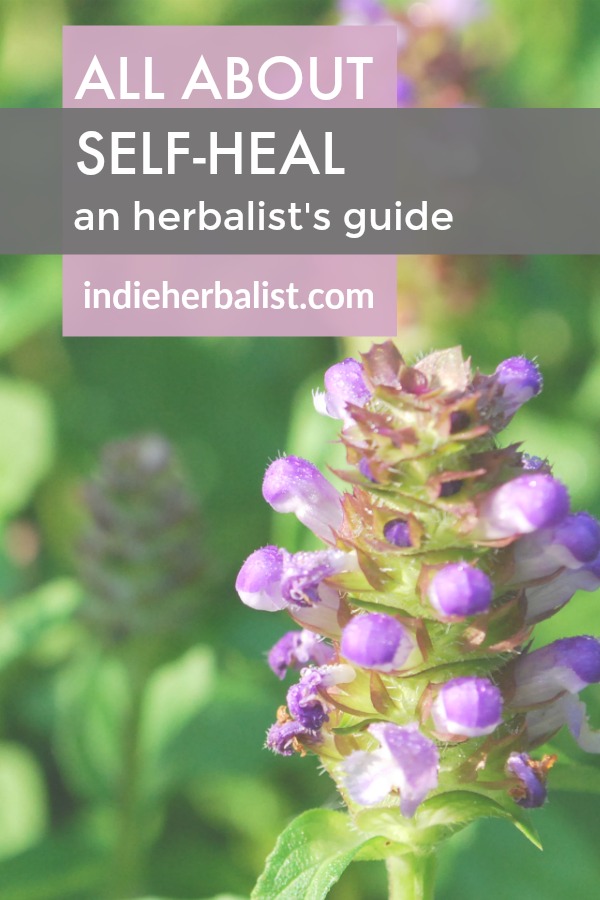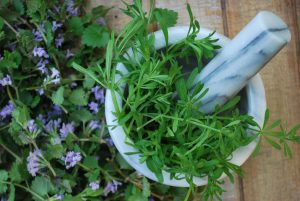Links contained in this post and elsewhere on my website may include affiliate links. When you make a purchase through these links, I earn a commission at no additional cost to you. I only link to products and services that I love - and that I think you will love, too!
Self-heal is a beautiful herb that grows well in many locations. It’s a great addition to herb gardens and herbal homesteads everywhere. Read this guide to using self heal to learn more about the benefits this herb has to offer.

I consider self-heal to be one of the key herbs everyone should know. Historical herbalists believed it to be one of the best “woundworts,”- plants to heal injuries. It’s sometimes overlooked by modern herbalists, but one historical herbalist referenced an old Italian proverb about self-heal that caught my eye.
Richard Hool, in Health from British Wild Herbs (1918) wrote:
“If the old Italian proverb, “He that hath Selfheal and Sanicle needs no other physician,” be true, then it must surely be a most valuable plant.”
Eventually, I also found articles by modern herbalists Katja Swift and Rosalee de la Foret that gave me even more insight into the uses of self-heal.
An Herbal Snapshot of Self Heal
I’ve had the pleasure of growing this herb and working with it personally, and find it quite lovely and versatile.
Self-heal is a member of the mint family. This herb is classified by herbalists as bitter, cooling, and astringent. However, it also has demulcent qualities that make it energetically similar to plantain (another astringent and yet mucilaginous herb).
Like plantain, self-heal is a versatile herb that provides for many of the day-to-day discomforts of homestead life as well as modern living.
Some of the herbal properties of self-heal include:
- astringent
- demulcent
- diuretic
- hemostatic
- lymphatic
- immunomodulator
- vulnerary
The fresh or dried herb can be used internally or externally and the fresh leaves can be used as a poultice. This is generally a very safe herb and falls along the “nutritive” side of the scale, meaning it is as safe as a food. As an example, nettles is another herb in the nutritive category.
Seasonal Comfort with Self Heal
One way to remember the benefits of self heal is to think seasonally. It can have timely uses in spring, summer, fall, or winter. These often hinge on it’s astringent properties, but also tie in with it’s immune supportive abilities.
Generally speaking, the best season to harvest self-heal is right before it blooms in early summer. However, I’ve seen it growing in my garden even under snow and it may be possible to harvest almost year-round if needed.
Allergy Season
The cooling, astringent profile of self-heal can provide support during allergy season. It’s also believed to be an immunomodulator than can help quell an overactive immune response. Self-heal blends well with other allergy support herbs or can be used on its own.
Cold and Flu Season
Because self-heal is an upper respiratory astringent and also may have polysacharrides that help to shorten duration of viral challenges, it’s a wonderful fall and winter ally. It also assists with the lymphatic processes and can be a good candidate when swollen lymph glands appear.
Sunburn Season
I love summer, but the summer heat and sun are a little hard for me to handle with fair skin! Even with sunscreen and staying covered up with long sleeves and a hat, I often need herbal support for sunburn. Self-heal is excellent topically for sunburn. It’s also a nice cooling summer beverage like lemon balm, hibiscus, and peppermint, although it has less taste than the others. Thanks to its mild taste you can add it to herbal lemonades or make ice cubes with the tea to include in your summer drinks.

Self Care with Self Heal
There are quite a few other ways that self-heal can offer support. It’s a great little herb for self care whenever you need a cooling astringent with vulnerary properties.
Mouth and Throat
Self heal has demulcent and astringent properties that make it beneficial for oral care. Because of self heal’s cooling nature, it excels in comforting hot, inflamed states of the mouth and throat. Self heal can be a valuable herbal tea when you are experiencing a sore throat, mouth ulcers, or inflammation in the gums. Traditional herbalists also turned to self heal for more serious conditions like abscesses on the tonsils.
Kidney Care
According to Matthew Wood in The Earthwise Herbal, A Complete Guide to Old World Medicinal Plants, traditional herbalists utilized self-heal for its diuretic properties, but they also believed it had a tonifying and strengthening effect on the kidneys. Rather than having a diuretic action by irritating the kidneys, it was believed to make them stronger and more efficient. He notes that herbalist William LeSassier used it “especially when there was dental decay combined with kidney trouble.” For context, a connection between healthy kidney function and strong bones and teeth is also drawn in Traditional Chinese Medicine.
First Aid with Self Heal
Self-heal is as useful as yarrow and plantain in the herbal first aid kit. It’s easy to grow, even from seed, and requires little care once established. This makes it a good plant to consider growing in your garden if you are interested in creating an herb garden for long-term emergency preparedness. Here are some of the ways it can be added to your herbal first aid kit.
Burn Support
I know I mentioned that self-heal is comforting for sunburns already. However, kitchen burns can also be comforted with a little help from self heal. Teas made with the dried herb can be used as a compress, or the fresh leaves can be used as a poultice. Self heal is energetically cooling, but also possesses soothing mucilage that makes it useful for this purpose.
Lacerations and Cuts
Some herbalists believe that self-heal works as well as yarrow as a natural styptic. It is also beneficial for after care to help keep a wound clean. In the words of herbalist Nicholas Culpeper, self-heal is “an especial remedy for all green wounds, to solder the lips of them, and to keep the place from any further inconveniencies.”
Abscesses
Similar to plantain, self heal has a drawing energy. This made it traditionally used for abscesses. The fresh leaves are especially useful in this regard, but the dried herb can be used as well.
If you are interested in herbs for first aid and emergency preparedness, you might also enjoy my article Stocking a Home Apothecary for Emergency Preparedness.
More Resources about Self-Heal
You may be able to find entries about self-heal in some of your favorite herb books. Modern herbalists Rosalee de la Foret and Katja Swift speak very highly of self-heal and I’ve included links to their articles below, along with some other interesting resources.
- Entry in A Modern Herbal by Maude Grieve
- Culpeper’s entry about self-heal
- The Self Heal Herb from Herbs with Rosalee
- Self-heal: Herb of the Week by Katja Swift
- Self-heal at WebMD
About Agatha
Thanks for stopping by to read the blog! I’m an herbalist and author. I hope you will stop by and learn more about me and my books over here.
Would you like to Pin this post for later?
Click or hover on the image below to use the Pinterest share button!



